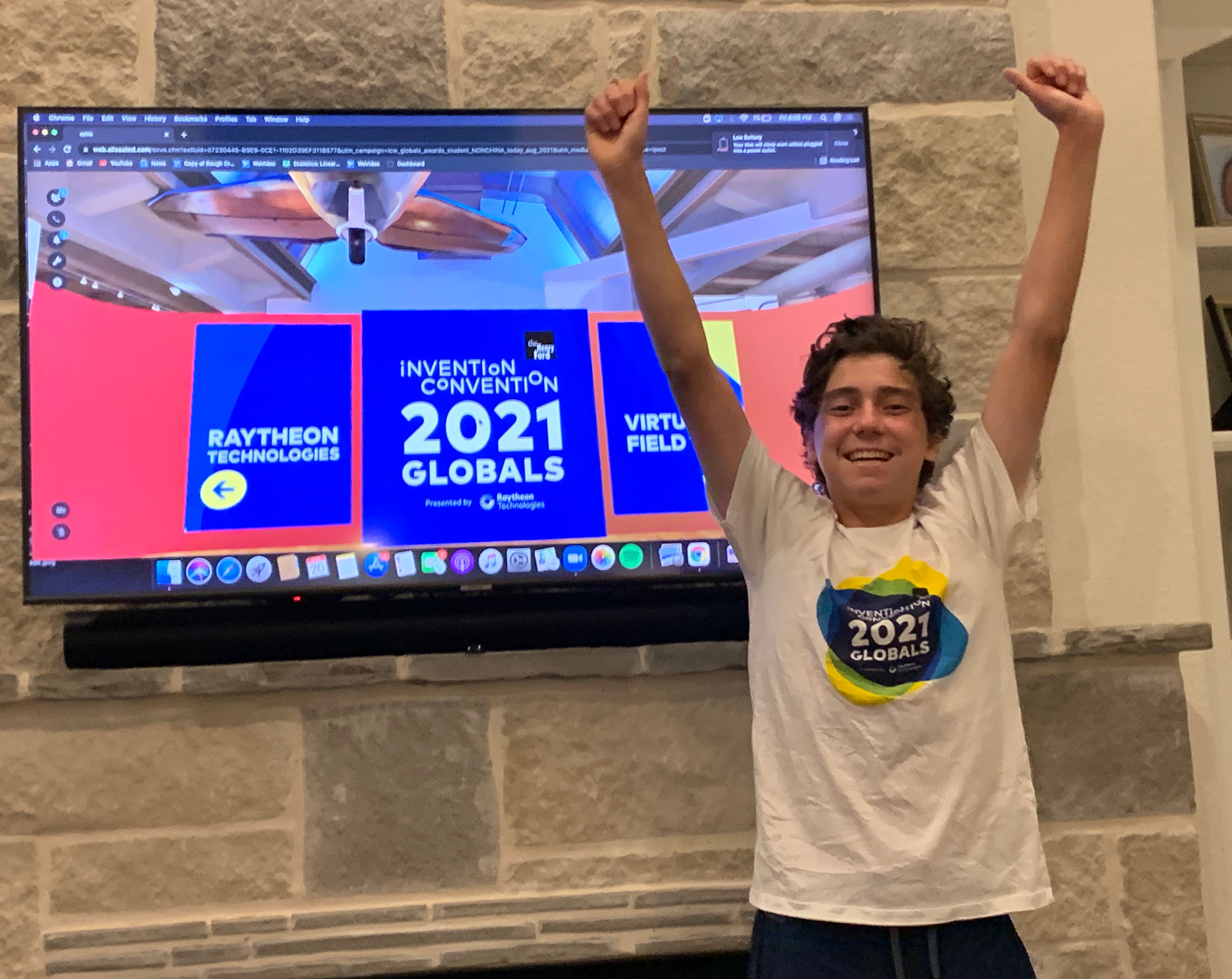
Lino Marrero was leaving cello practice one day when he noticed several blisters on his fingers. The pain was so bad that the 10-year-old inventor from Frisco, Tx. wanted to quit playing the instrument for good, even though he loved music. So he started doing some research online to find a solution. “I learned that a lot of musicians actually quit their instrument because of finger pain,” says Marrero, now 15. “That’s when I realized I need to invent something for this.” A few months later, the “String Ring” was born. It’s an adjustable band that protects a string musician’s sore and blistered fingers so that they can keep practicing without a loss of sound quality.
Marrero’s first invention was a success, but he didn’t stop there. A year later, at the age of 11, he created an eco-friendly shoe with replaceable soles after learning how expensive and environmentally harmful it can be to own multiple pairs of footwear. “Shoe waste contributes a lot to landfills,” he says, “especially since they have rubber soles that don’t dissolve easily.” Instead of owning separate shoes for different sports—such as soccer cleats or basketball sneakers—Marrero’s invention allows athletes to keep just one pair in their closet.
More from TIME
The self-proclaimed “serial inventor” has a notepad full of inventions like these. He keeps an inventor log next to his bed, with hundreds of pages of ideas and mockups. On the very first page is a message he wrote to his future self when he was 10 years old: “This log, in all its staple marks and all its eraser marks, are proof that every time I thought I was done, I had only just begun.” The message, he says, inspires him to keep inventing.
For Marrero, being an inventor is about social change and helping the world by creating solutions to everyday challenges. “I always start with a problem and how it affects other people,” he says. “Can I bring more music to the world? Can I make sports more accessible for everyone? Can I help the environment positively?”

As a child, he used to take apart TV remotes and old radios, anything that could be examined. “I really like to get inspiration from my everyday life,” he says. All of his inventions were prompted by real world challenges. He came up with the idea for his latest invention, Kinetic Kickz, after he finished soccer practice and tried to call his mom to let her know he was ready to be picked up. But his phone was dead, and he didn’t have a charger. As he sat on the soccer field, he thought back to what his teacher said about renewable energy sources. What if he could harness the energy he expended playing soccer to power his phone? “I went home and researched all about it,” he says. After spending hours at the drawing board, tinkering with wires and creating 10 different prototypes, he created a shoe insert that collects kinetic energy and converts it into battery power to charge a cell phone. Marrero calculates that 12 minutes of walking can generate enough kinetic energy to charge 10 percent of a cell phone battery.
When a freak winter storm in Texas caused massive power outages in early 2021, Marrero finally got to test his invention during a time of need, and it worked. But he also realized he needed to make a few adjustments so the shoe would be more comfortable. So he put the technology inside the sole, instead of a slip in, and made it so the collected energy goes straight to a USB power bank so it can be used later.
“No one in my family is an engineer or anything like that,” Marrero says. “So I went to the library, I went online, and I found out about piezoelectric discs and diode bridge rectifiers on my own.”
His dream is that in the future, the world will use Kinetic Kickz or its technology to create clean energy and limit the effects of climate change. Although solar and wind power are gaining more popularity, Marrero says he prefers kinetic energy because “you can’t always depend on the wind to blow or the sun to shine.” A high school freshman now, Marrero wants to inspire other children and teenagers to be inventors too.
Younger people, he says, often have different perspectives that can be useful in creating ideas, but need encouragement. “So much of the world is kids,” Marrero says. “We need to get a chain going, where I inspire someone and they help inspire someone.”
Read about more of the 2021 TIME Kid of the Year finalists here.
Watch the Kid of the Year broadcast special, hosted by Trevor Noah, on Nickelodeon on Wednesday, Feb. 9, at 7:30pm/6:30pm CT to find out which finalist will be named TIME Kid of the Year
More Must-Reads From TIME
- The 100 Most Influential People of 2024
- The Revolution of Yulia Navalnaya
- 6 Compliments That Land Every Time
- What's the Deal With the Bitcoin Halving?
- If You're Dating Right Now , You're Brave: Column
- The AI That Could Heal a Divided Internet
- Fallout Is a Brilliant Model for the Future of Video Game Adaptations
- Want Weekly Recs on What to Watch, Read, and More? Sign Up for Worth Your Time
Write to Nik Popli at nik.popli@time.com